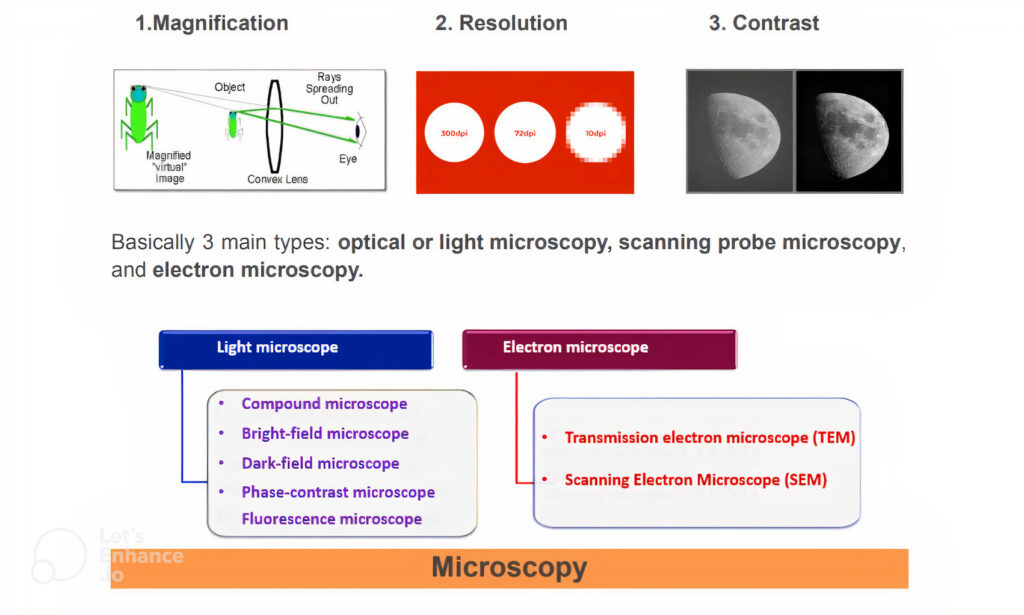Microscopy Inspection
Microscope Is an instrument for viewing an object that is too small to see by naked eye or unaided eye.
Microscopy Is the technical field of using microscopes to view samples & objects that cannot be seen with the unaided eye (objects that are not within the resolution range of the normal eye).
During the preliminary research into any new material, whether it is a drug, polymer, metal, or combination of materials, only small amounts of samples are prepared. Often, many different tests must be performed on each of these small samples; therefore, in order for a chemist to obtain chemical information about the sample, he must know or utilise chemical testing on a microscopic scale.
Important factors in microscopy include.
Spectroscopy Inspection
Spectroscope: – An instrument that is used for measuring the properties of light in a certain portion of the electromagnetic spectrum is known as a spectroscope. Spectroscopes are also known as optical spectroscopes,
Spectroscopy: – is the study of the interaction between matter and electro-magnetic radiation. The matter can be Atom, molecules or Ions
Spectroscopic data is often represented by a spectrum, a plot of the response of interest as a function of wavelength or frequency.
Spectroscopy is mainly used to identify and elucidate the elements and compounds of atoms and molecules. They are measured by examining the absorbed or emitted radiant energy by the sample or object. Here, the beam of electromagnetic radiation like infrared rays, UV rays etc. are passed on the sample and the response of the sample is measured through the wavelength of the electromagnetic spectrum applied from the external energy source.
Spectroscopic techniques are widely used for quantitative and qualitative analysis.
Production and analysis of a spectrum usually require the following:
- A source of light(or other electromagnetic radiation).
- A disperser to separate the light into its component wavelengths.
- A detector to sense the presence of light after dispersion.
When the radiation meets matter the radiation is either scattered, emitted or Absorbed: –





